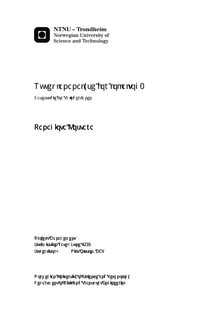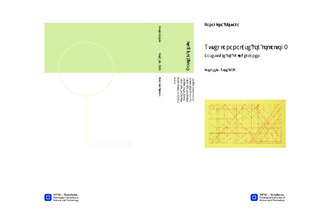| dc.description.abstract | Because of the planned electrification of the Trondheim-Steinkjer, it is necessary to look at different route concepts Trønderbanen. Electric trains have better acceleration performance than current diesel ones, which would result in a theoretical travel time savings of 7 to 10 minutes in the line between Trondheim and Steinkjer. As the route is single-track, the current route model is restricted by the crossing points, and there is little room to achieve real runtime savings.Trønderbanen is very important for both Trondheim and the regions that are linked to it through the specific rail-path, the infrastructure and pathways are characterized by being old and with relatively low average speed. The sharp curves and gradients limit the speed that can be reached. Large parts of the line have low geometric standards and a standard rate as low as 80 km / h (independent of the stop pattern). Parts of the trail are further landslide and erosion prone, with significant operating and unsecured level crossings. The path is currently preclude public access to outdoor recreation areas (especially sea), which it is described by the traffic sign that indicates hazard and it is called "wild crossings". (Forslag til Planprogram ?dobbeltspor Trondheim S - Stjørdal av 25.mars 2013.)The part of the line between Trondheim S and Stjørdal is fully exploited when it comes to capacity and it is not possible to put more trains in the line without compromising runtime and / or punctuality. This part of the line also affects Stjørdal ? Steinkjer as well as the long distance trains and freight for Nordlandsbanen. This specific part between Trondheim S and Stjørdal is described by Jernbaneverket as a ?bottleneck? for both lines of Nordlandbanen and Trøndersbanen. The current capacity of the line cannot be increased if the line is going to remain as currently.The task is therefore to develop and compare different route concepts in Trønderbanen to provide an indication of which improvements can be achieved and to identify other necessary measures in order to accomplish this.Due to the wished electrification of the examined line a re-scheduling of routes is essential. The procedure of producing timetables for the specific line (Steinkjer-Søberg) has been conducted by Viriato, a specialized software. Sintef Teknologi og samfunn owns the licence to the software as it has a special agreement with NSB as a part of PUSAM project (punktlighetsforbedring og kostnader av forsinkelser i jernbanetrafikk).The evaluation criteria /factors that have been chosen in order to evaluate the scenarios are the following: The achieved crossings, the driving times, the number of train sets that need to be used. To get the number of train sets printing of the graph has been chosen because of its simplicity.Some other factors have been examined also and these are: the demand based on the population, the timetable times around zero, the stability of the timetable, the historical value of each station, the number of crossings. Recovery times, the employees? point of view and comparison with the current timetable have also been examined. The procedure has been traced by the planning department of NSB and with the use of data provided by Jernbaneverket.The theoretical part of this report is focused on primarily on punctuality and routing to maximize the probability of avoiding delay and / or prevent them from being scattered. Timetable theory is being presented with a special focus on placing of buffer times. That is another important issue that is being discussed and completes the theoretical background of the current report. | nb_NO |

